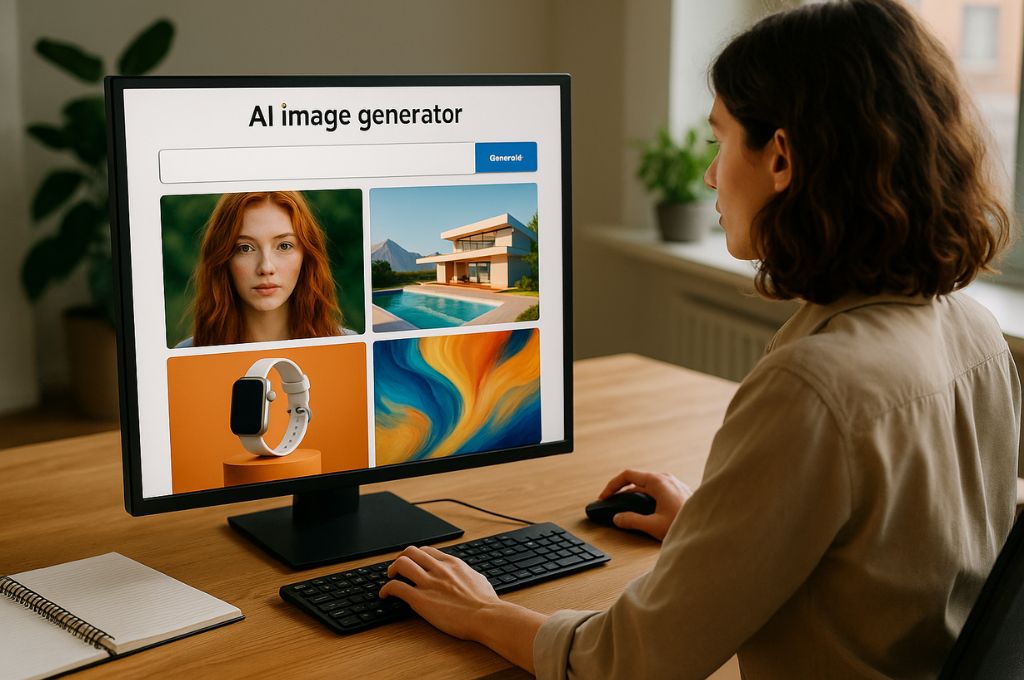 Tight turnarounds leave no margin for guesswork, so the image engine you rely on must keep pace with shifting briefs and strict brand rules. I learned that after running a dozen platforms through the wringer during a tech-accessory launch. The lessons expanded on what I uncovered while exploring the hidden power behind AI-generated video magic and clarified which features genuinely move the needle.
Tight turnarounds leave no margin for guesswork, so the image engine you rely on must keep pace with shifting briefs and strict brand rules. I learned that after running a dozen platforms through the wringer during a tech-accessory launch. The lessons expanded on what I uncovered while exploring the hidden power behind AI-generated video magic and clarified which features genuinely move the needle.
Understand Your Visual Needs
Every team pursues a different goal. A social-media agency demands eye-catching outputs that hook viewers in two seconds. An illustration studio prefers a detailed base to retouch in Photoshop. Before you even open a comparison chart, list:
-
Output formats (square, vertical, HD)
-
Level of photorealism or abstraction
-
Monthly image volume
-
Flexibility on commercial licenses
A clear vision spares you from testing ten platforms without conclusions and focuses the evaluation on three or four relevant options.
Assess Image Quality
Raw resolution counts, but aesthetic relevance matters more. A good engine translates the nuance of a prompt without color artifacts or anatomical distortion. To measure this point:
-
Prepare a series of short and long briefs.
-
Run each prompt on several tools with default settings.
-
Rate concept fidelity, texture coherence, and proportion accuracy.
This quick grid may reveal, for example, that Leonardo AI excels at illustrated renders, Fotor AI delivers consistent photographic output, and NightCafe Creator shines on complex artistic styles yet sometimes needs external upscaling for very large formats.
Measure Speed and Costs
Two metrics dominate: average generation time and cost per image batch. Some services use a credit system; others charge by subscription with an emphasis on premium models. Calculate the real price per final visual, including any upscales. Also check the queue: a cheap tool becomes expensive if you wait ten minutes for every render.
Advanced Features That Make the Difference
-
Variation & Remix: Quickly reroll the same concept with slight style shifts.
-
Inpainting & Outpainting: Retouch a precise area or extend a frame that is too tight.
-
API or Figma plug-in: Direct integration into the working canvas to eliminate manual exports.
-
Library of pre-trained styles: Huge time-saver for consistent output across multiple campaigns.
For instance, Fotor AI’s cinematic presets are a reliable starting point for a cohesive Instagram carousel, whereas Leonardo AI’s depth-control suits large-format posters better.
Security, Rights, and Ethics
The topic is as legal as it is ethical. Before finalizing your choice:
-
Read the commercial-use and copyright clauses.
-
Check the origin of datasets; a provider transparent about its sources lowers litigation risk.
-
Favor platforms offering a “private model” option for confidential projects.
Some agencies already run an internal audit to avoid using an image derived from an uncredited artist. Anticipating this step protects your brand’s reputation.
Rapid Evaluation Method
-
Select three or four tools covering your key formats.
-
Run three prompt series: product packshot, lifestyle scene, abstract visual.
-
Compare render time, result consistency, and unit cost.
-
Keep the option that combines stylistic fidelity, responsiveness, and acceptable price.
A simple spreadsheet is enough to reveal the best value-for-money ratio without losing a week on scattered tests.
Designing an Express Workflow in Five Steps
A high-performing generator shows its real potential when it supports a straightforward process. I use the following sequence:
-
Text sketch – frame the idea in one or two short sentences.
-
Enriched prompt – specify mood, palette, orientation, and realism level.
-
Initial batch – launch four versions to test coherence.
-
Targeted variation – refine the best image via variation or in-painting.
-
Upscale & export – finalize in high resolution, then send to Figma.
This method cuts through option overload and keeps the project under control without sacrificing creativity.
Maintaining Visual Consistency Across Multiple Campaigns
When a brand produces a hundred visuals per quarter, consistency becomes critical. I create a visual glossary: hexadecimal palette, recurring textures, lighting ratio, shooting angles. Each generator accepts these parameters as saved styles or custom presets. Re-using them from one campaign to the next secures a stable identity while benefiting from generation speed.
Integrating the Generator into Your Collaborative Stack
Most design projects now run through a task-management tool. A REST API or dedicated plug-in lets you send a prompt from Trello or Notion and retrieve the image without switching windows. In my setup, a Make automation adds each render to a Kanban board with its version, prompt, and date. Client feedback then lands directly on the thumbnail, eliminating email loops and preserving the history.
Choosing an AI image generator is not only about perfect pixels; it is about ensuring a smooth creative flow from brief to delivery. By setting your criteria before the testing phase, you turn a crowded market into a strategic chess game where every move serves your profitability. If your next challenge touches the following stage of the creative cycle, I have detailed how to move from wireframes to interactive prototypes without friction on the page dedicated to automated UI mock-ups.
